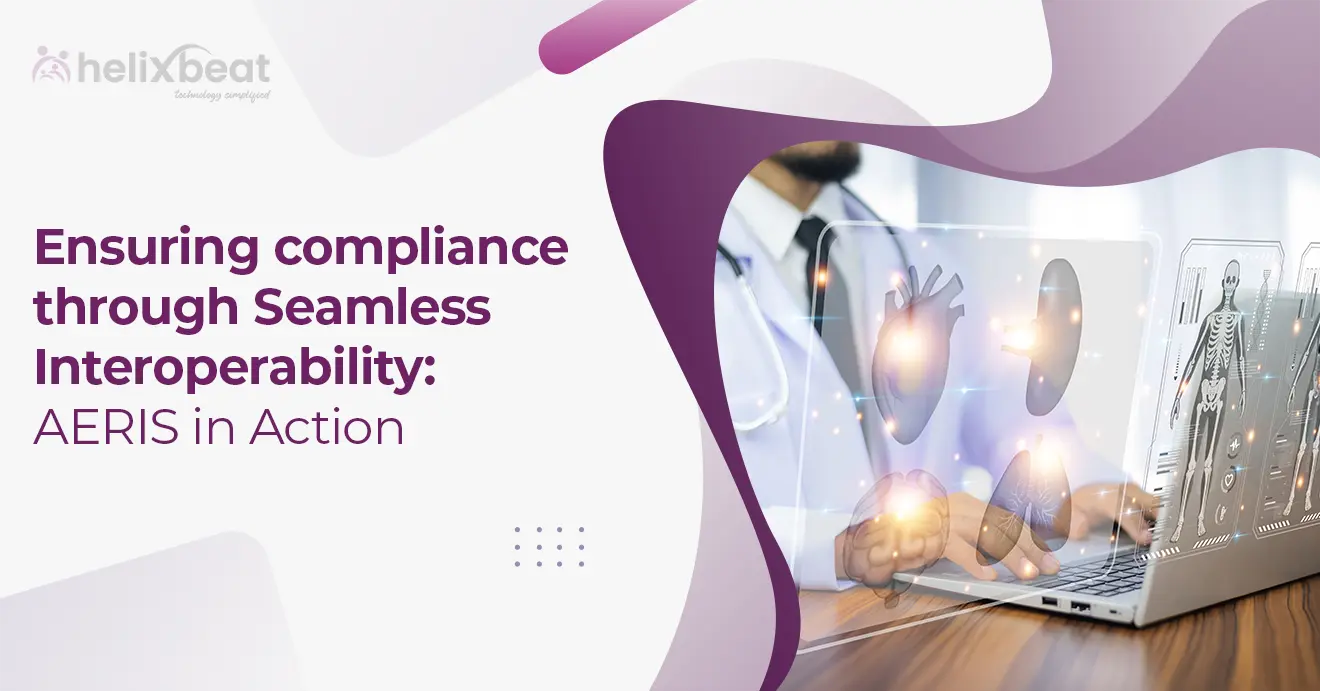Healthcare data should move as seamlessly as the care it supports. Yet, many organizations find themselves tangled in a web of regulatory mandates, outdated systems, and data silos. With laws like HIPAA and the 21st Century Cures Act pushing for greater transparency and interoperability, the pressure to modernize has never been higher. But how can healthcare providers share critical information without compromising security or efficiency?
This is where AERIS makes a difference. Designed to transform data interoperability in healthcare, AERIS bridges the gap between compliance and seamless data exchange. By eliminating roadblocks in data sharing, it enhances clinical decision-making, optimizes workflows, and ultimately contributes to better patient care.
Table of Contents
The Compliance-Interoperability Challenge
Healthcare providers, payers, and technology vendors have long grappled with fragmented data systems. While interoperability promises fluid data movement, compliance mandates demand rigid security and structured reporting. The intersection of these two aspects presents unique challenges:
- Diverse Data Standards – HL7 v2, FHIR, CDA, and proprietary formats create inconsistencies in data exchange.
- Security and Privacy Concerns – Regulations such as HIPAA impose strict guidelines for safeguarding patient information.
- Inter-System Integration – Legacy and modern systems often operate in silos, restricting seamless communication.
- Audit and Reporting Requirements – Regulatory bodies require detailed documentation and traceability of data transactions.
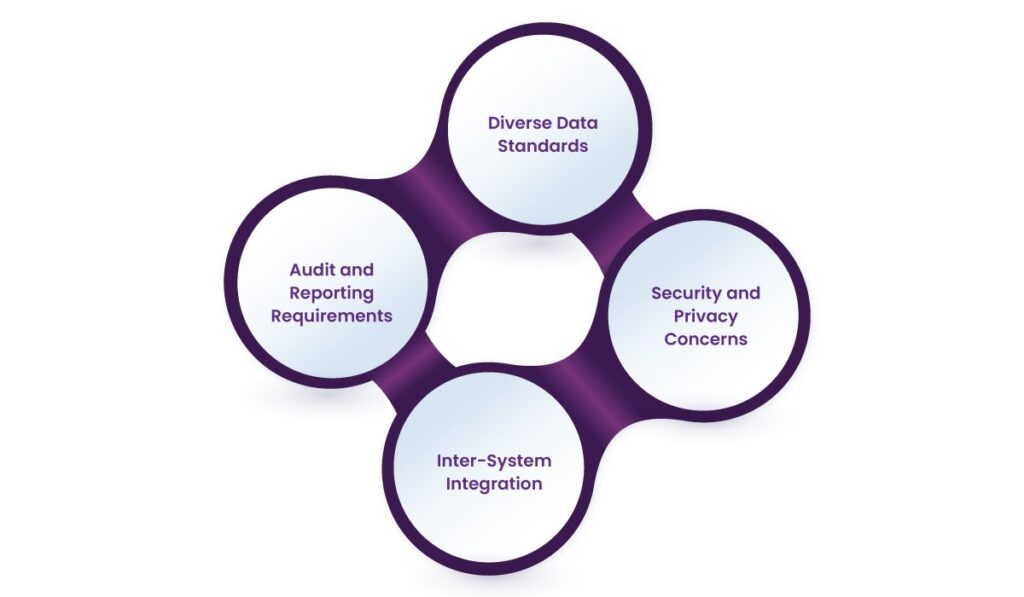
Therefore, organizations struggle with inefficiencies, compliance risks, and limited data usability without a cutting-edge interoperability solution.
AERIS: A Compliance-Driven Interoperability Solution
AERIS is built with a FHIR-first approach, leveraging HL7, Flat Structure, and Nested Structure to standardize healthcare data exchange. It acts as a bridge between disparate systems and promotes seamless data interoperability in healthcare without compromising security or regulatory compliance.
1. FHIR-Based Standardization for Regulatory Alignment
One of the critical aspects of compliance is adherence to Fast Healthcare Interoperability Resources (FHIR), the globally recognized standard for health data exchange. AERIS seamlessly translates and structures data into FHIR formats, making it easier for organizations to:
- Maintain consistency across Electronic Health Records (EHRs)
- Facilitate real-time data retrieval and exchange
- Comply with regulatory mandates on patient data access and sharing
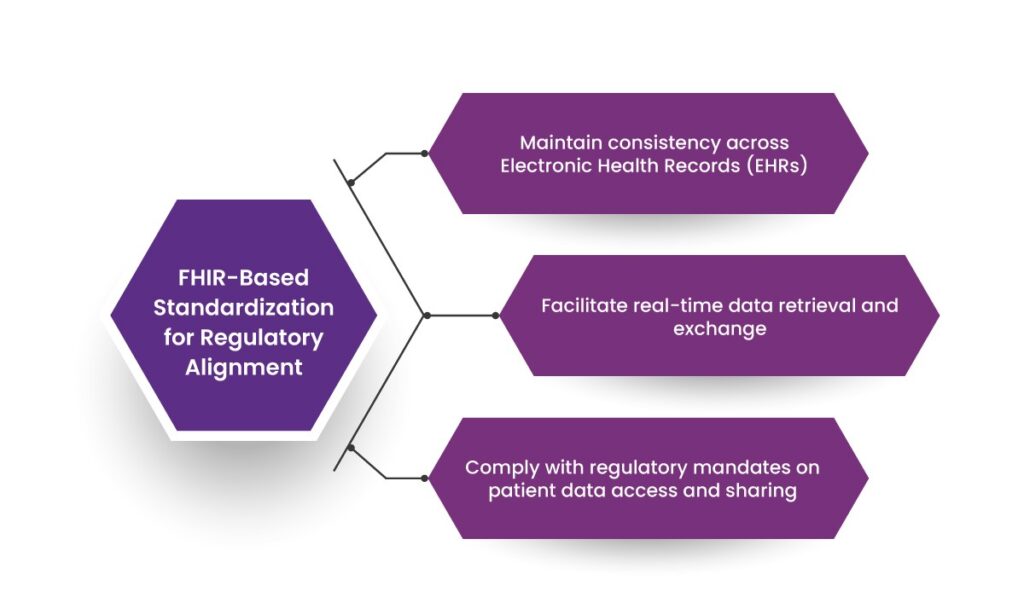
2. End-to-End Data Security and Privacy
Data privacy remains a top concern in healthcare compliance. AERIS is engineered with robust encryption protocols, role-based access controls, and automated consent management to protect sensitive patient information.
- Encryption at Rest and in Transit – Protects PHI (Protected Health Information) against breaches
- Role-Based Access Control (RBAC) – Restricts data access based on user roles, minimizing exposure risks
- Audit Trails and Logging – Maintains detailed logs of all transactions, essential for regulatory audits
These features help healthcare organizations align with HIPAA requirements.
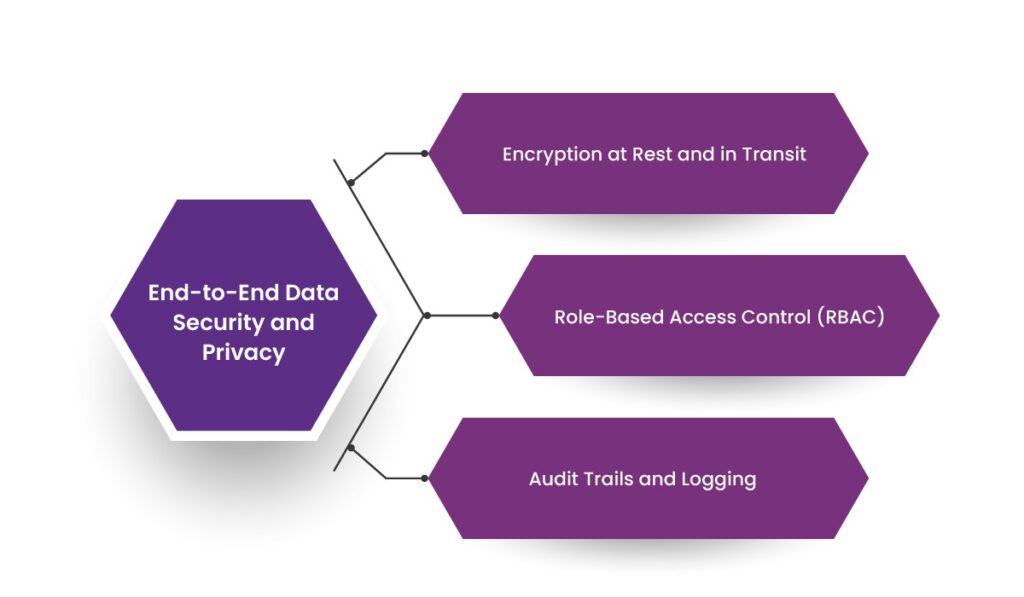
3. Seamless Integration Across Legacy and Modern Systems
Many healthcare providers still operate on legacy IT systems, making it difficult to comply with new interoperability mandates. AERIS solves this challenge by providing:
- API-Driven Interoperability – Supports seamless data exchange between cloud-based and on-premise applications
- Backwards Compatibility – Bridges the gap between old HL7 v2 interfaces and modern FHIR-based data systems
- Automated Data Mapping – Converts and aligns data structures for uniformity across platforms
By connecting disparate systems, AERIS accelerates data-driven workflows, making compliance an operational advantage rather than a burden.
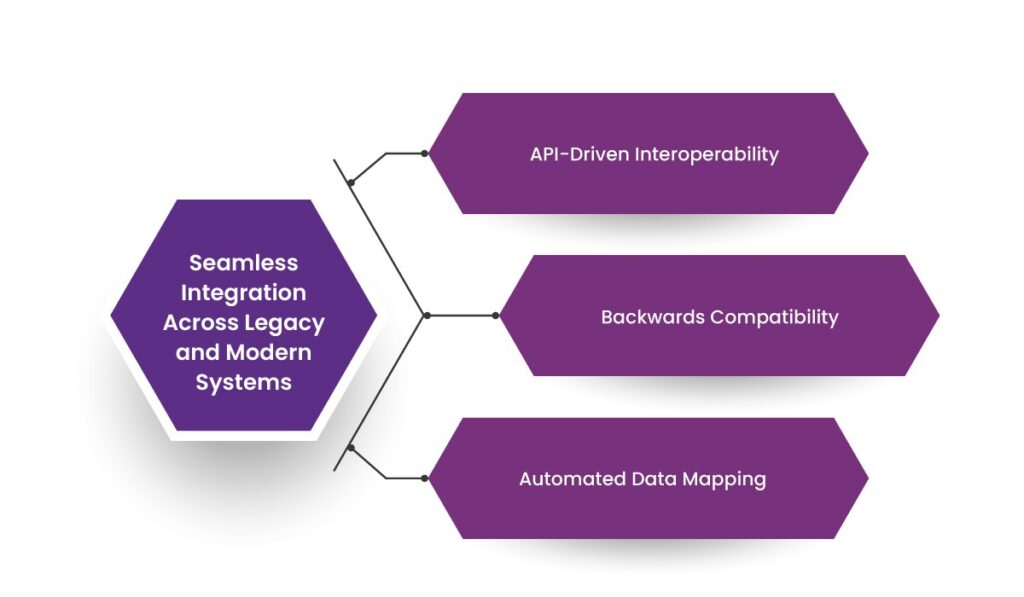
Real-Life Example: How AERIS Can Enhance Data Exchange in a Multi-Hospital Network
A large healthcare network spanning multiple hospitals and clinics faced challenges in data standardization and regulatory compliance. Each facility used different EHR systems, making it difficult to consolidate patient records, share information across departments, and comply with national interoperability frameworks.
The Challenge: A Fragmented Healthcare System
Imagine a scenario where a patient, Elizabeth, visits her primary care physician at Clinic A for a routine check-up. A few weeks later, she experiences severe chest pain and rushes to the emergency department of Hospital B. The doctors at Hospital B need immediate access to her medical records—medication history, past diagnoses, and test results from Clinic A—to make a life-saving decision.
However, because the two facilities operate on entirely different EHR platforms, retrieving her records isn’t a straightforward process. The hospital’s staff either has to manually request the data via fax or make multiple phone calls to Clinic A. The lack of standardized data interoperability in healthcare not only risks patient safety but also increases operational inefficiencies and compliance challenges.
How AERIS Bridges the Gap
Recognizing the pressing need for seamless data exchange, the healthcare network implemented AERIS, a robust interoperability solution built on FHIR (Fast Healthcare Interoperability Resources) standards. Here’s how it transformed the system:
- Seamless Data Standardization: AERIS converted disparate data formats into a unified, structured system, making it instantly accessible across all hospitals and clinics.
- Enhanced Data Security: Role-based access controls restricted sensitive patient information to authorized personnel, minimizing risks of data breaches and unauthorized access.
- Reduced Administrative Workload: By eliminating manual record retrieval, healthcare providers shifted their focus back to patient care instead of paperwork.
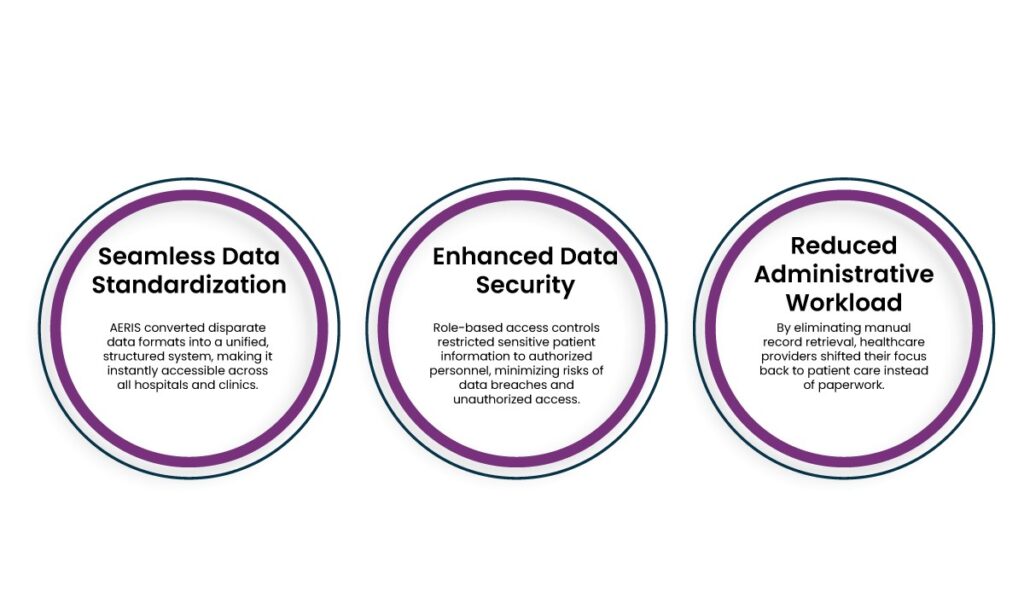
The Impact
With AERIS in place, Elizabeth’s next hospital visit looked completely different. During her checkup, Hospital B could instantly retrieve her medical history from Clinic A, which helped the doctor to make informed decisions without delays. What once took hours now happened in seconds. For the healthcare network, the transformation was game-changing:
- Faster Clinical Decision-Making: Physicians accessed real-time, comprehensive patient data, leading to quicker diagnoses and better treatment outcomes.
- Significant Cost Savings: Reduced paperwork, fewer administrative hours, and minimized redundant tests led to substantial financial benefits.
The above example highlights how data interoperability in healthcare is more than just a technological upgrade—it’s a lifeline for efficient, accurate, and patient-centered care.
Final Thoughts
In an era where compliance and data interoperability in healthcare are non-negotiable, AERIS provides a reliable and scalable solution. By bridging system gaps and securing patient information, it transforms interoperability from a challenge into an operational strength.
If you’re ready to experience the power of real-time healthcare data exchange, discover how AERIS can revolutionize your organization’s interoperability. Contact us today and get a free consultation.
FAQs
- What is data interoperability in healthcare, and why is it important?
Data interoperability in healthcare refers to the seamless exchange of patient information across different systems and providers. It is essential for improving care coordination, enhancing clinical decision-making, and ensuring compliance with regulatory mandates like HIPAA and the 21st Century Cures Act.
- How does AERIS help with regulatory compliance in healthcare?
AERIS aligns with industry standards like FHIR, HL7, and CDA to standardize healthcare data exchange. It also integrates security measures such as encryption, role-based access controls, and audit logging to meet compliance requirements.
- Can AERIS integrate with both legacy and modern healthcare systems?
Yes, AERIS supports API-driven interoperability, backward compatibility with HL7 v2 systems, and automated data mapping to connect legacy and cloud-based healthcare applications.
- How does AERIS help reduce administrative workload in healthcare organizations?
By automating data exchange and eliminating manual record retrieval, AERIS allows healthcare staff to focus on patient care rather than paperwork.
- What are the cost benefits of implementing AERIS for healthcare data exchange?
AERIS reduces operational costs by minimizing paperwork, administrative efforts, and unnecessary duplicate tests, leading to significant financial savings.
- How can healthcare organizations get started with AERIS?
Organizations interested in improving data interoperability in healthcare can contact Helixbeat for a free consultation to explore how AERIS can be tailored to their specific needs.
- How does AERIS improve data security in healthcare interoperability?
AERIS safeguards patient data with encryption for information at rest and in transit, role-based access controls to limit exposure, and audit trails that track all data transactions for accountability.



